Abstract
Isolates of Fusarium and Stachybotrys spp. and crude extracts from these fungi were obtained from Hungary and the U.S.S.R. and used for the evaluation of the mycotoxins they produced. The cultures were grown on millet and oats and extracted in Budapest, Hungary (Veterinary Medical Research Institute) and chemically analyzed at the University of Minnesota using thin-layer chromatography (TLC), gas-liquid chromatography (GLC), gas chromatograph-mass spectrometry (GC-MS), and the rat skin bioassay. Zearalenone was found in most of the Fusarium cultures, T-2 toxin, neosolaniol, T-2 tetraol, and HT-2 toxin were found in extracts of Fusarium poae and F. sporotrichioies. A special effort was made to isolate the steroid-like toxins reported in the early Russian literature as sporofusarin and poaefusarin. None of the extracts from the Fusarium species yielded poaefusarin or sporofusarin when analyzed by our chemical methods or by those of L.E. Olifson, S.M. Kenina, and V.L. Kartashova, 1972. We therefore accounted for the toxicity of the Fusarium extracts as due to the 12,13,epoxytrichothecenes. One culture of Stachybotrys alternans yielded a macrocyclic ester of 12,13-epoxytrichothecene which, upon hydrolysis, yielded verrucarol; a steroid-like molecule (SB-3) was also isolated. The former had skin-irritant activity but SB-3 did not; the latter exhibited cardiac activity on the heart of the cockroach.
Full text
PDF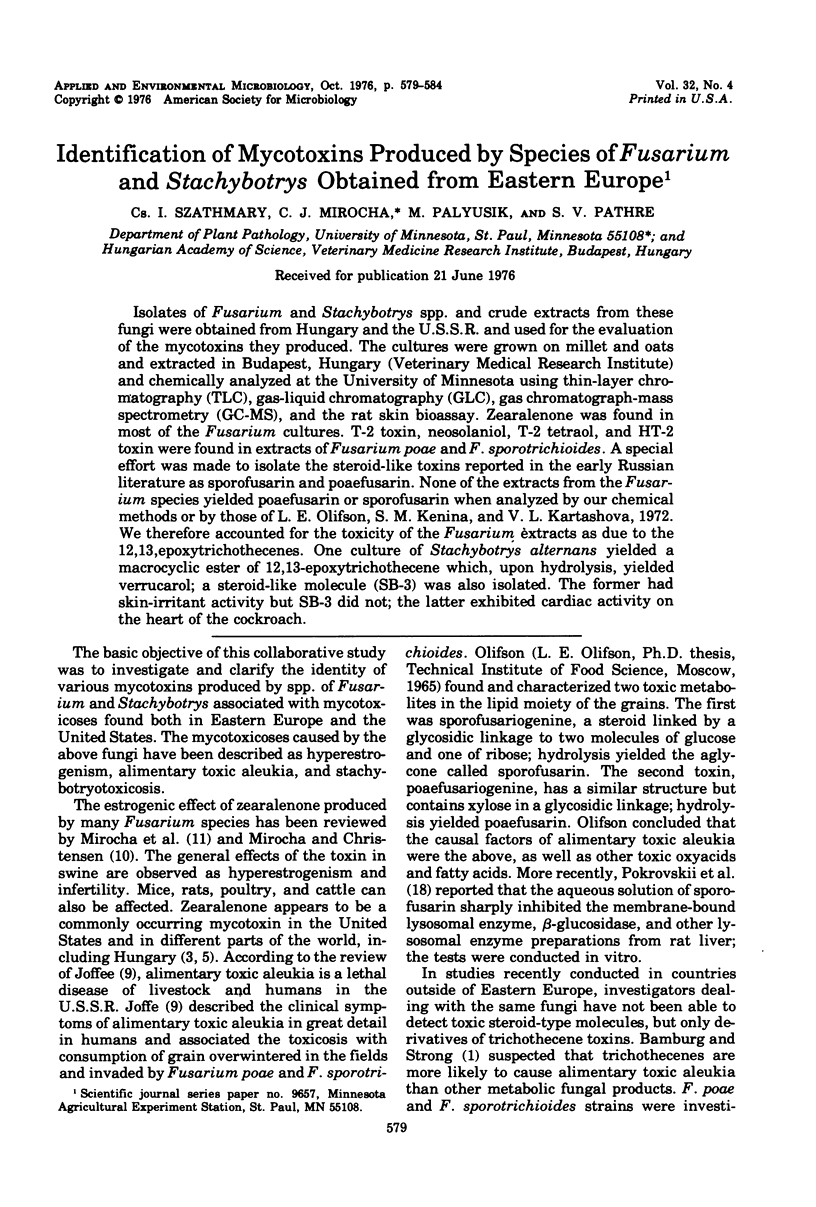
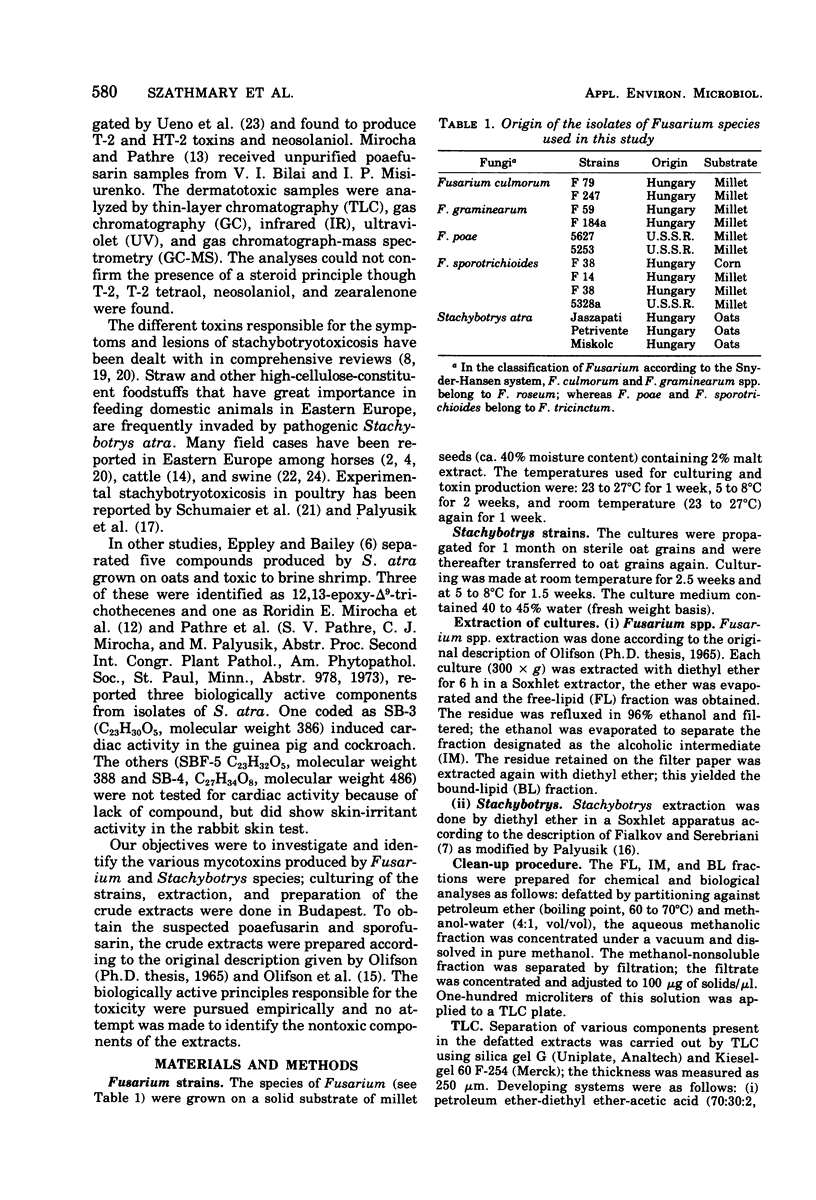
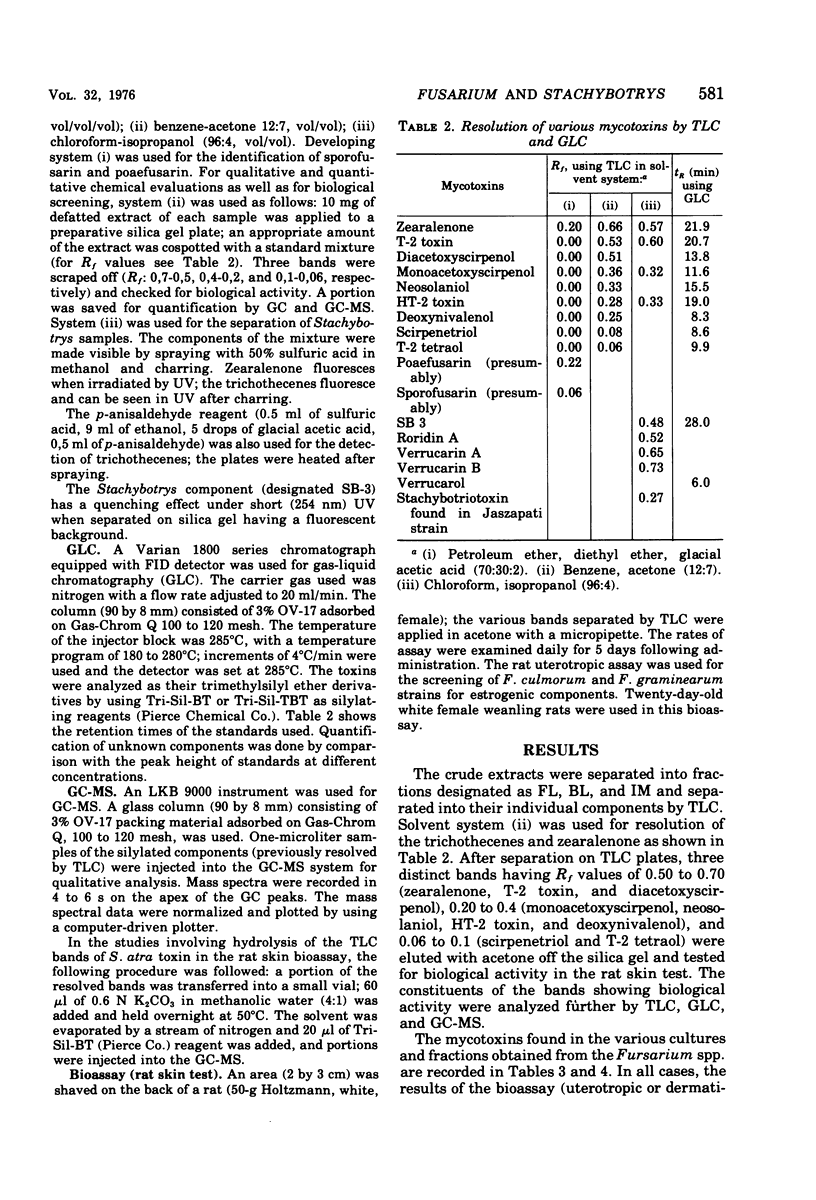
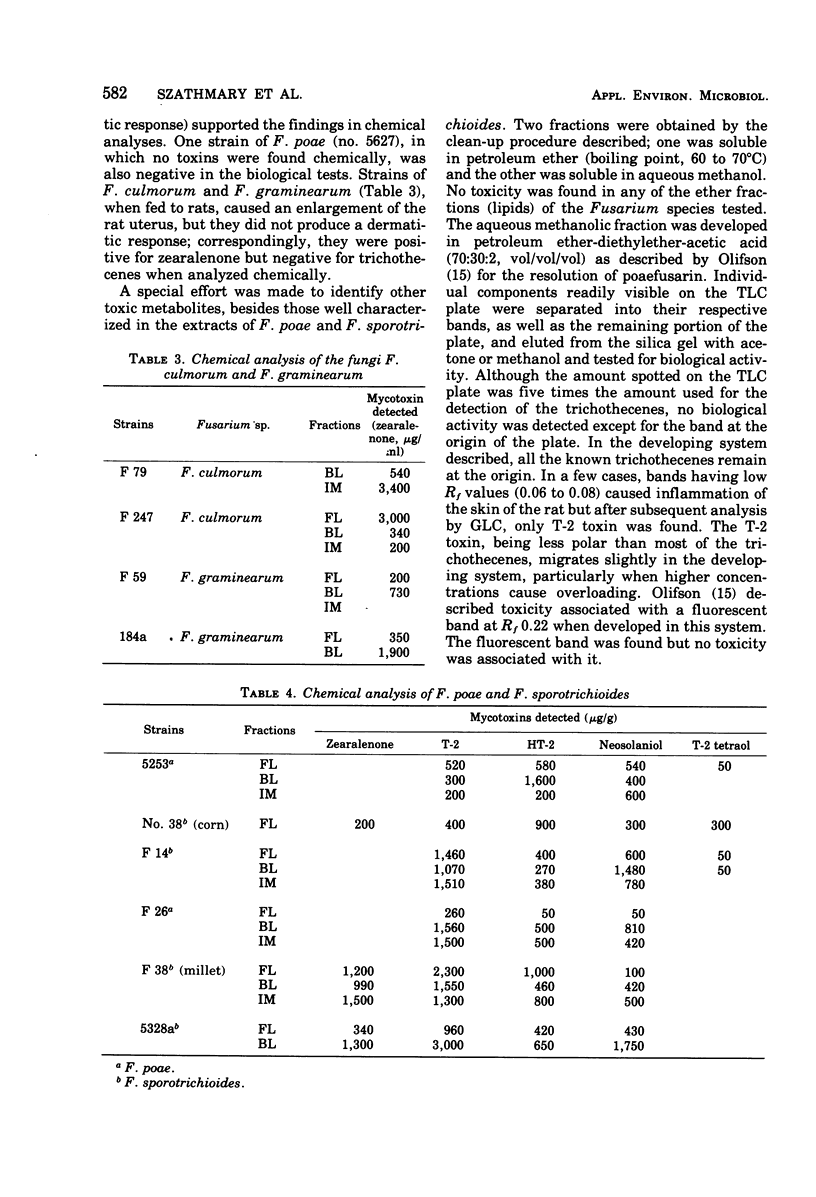

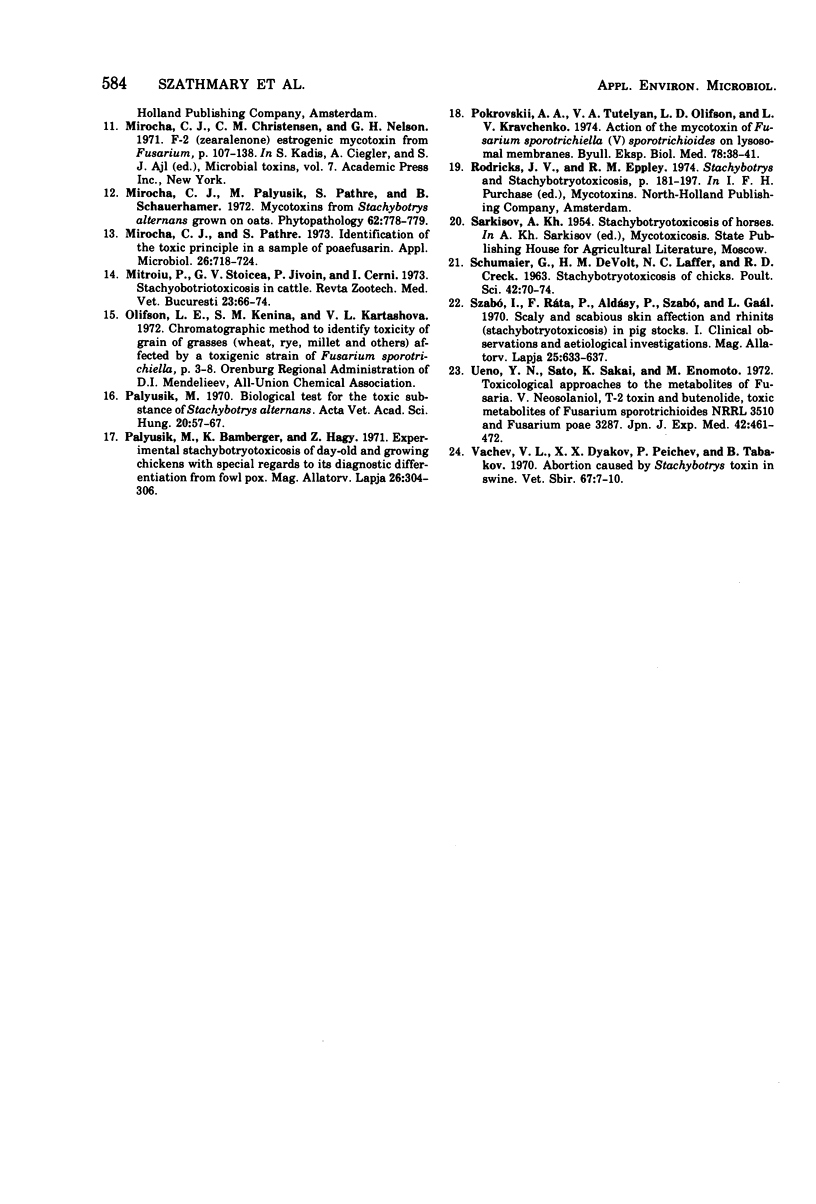
Selected References
These references are in PubMed. This may not be the complete list of references from this article.
- Eppley R. M., Bailey W. J. 12,13-Epoxy-delta 9-trichothecenes as the probable mycotoxins responsible for stachybotryotoxicosis. Science. 1973 Aug 24;181(4101):758–760. doi: 10.1126/science.181.4101.758. [DOI] [PubMed] [Google Scholar]
- Mirocha C. J., Pathre S. Identification of the toxic principle in a sample of poaefusarin. Appl Microbiol. 1973 Nov;26(5):719–724. doi: 10.1128/am.26.5.719-724.1973. [DOI] [PMC free article] [PubMed] [Google Scholar]
- Palyusik M. Biological test for the toxic substance of Stachybotrys alternans. Acta Vet Acad Sci Hung. 1970;20(1):57–67. [PubMed] [Google Scholar]
- Ueno Y., Sato N., Ishii K., Sakai K., Enomoto M. Toxicological approaches to the metabolites of Fusaria. V. Neosolaniol, T-2 toxin and butenolide, toxic metabolites of Fusarium sporotrichioides NRRL 3510 and Fusarium poae 3287. Jpn J Exp Med. 1972 Oct;42(5):461–472. [PubMed] [Google Scholar]


